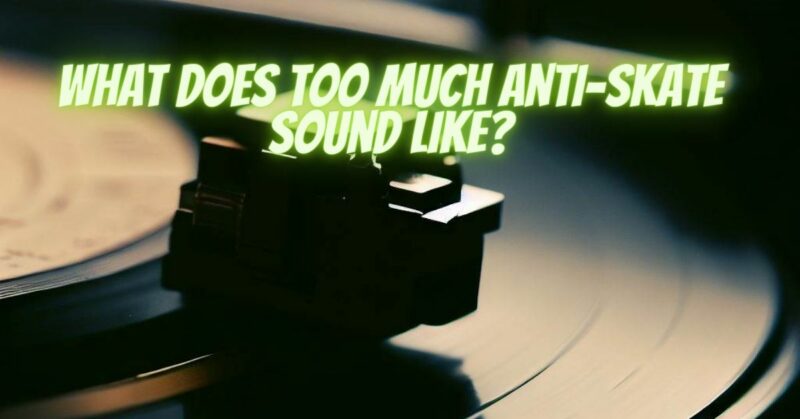Anti-skate adjustment is a critical aspect of turntable setup, ensuring accurate tracking of the stylus in the record groove. However, just as insufficient anti-skate can lead to tracking issues, too much anti-skate can also affect audio playback. In this article, we’ll delve into the potential consequences of applying excessive anti-skate force and discuss how it might manifest in your turntable’s sound.
Understanding Anti-Skate
Anti-skate, also known as tracking force bias, is a mechanism used to counteract the skating force that pulls the stylus towards the center of the record. Proper anti-skate adjustment ensures that the stylus remains centered within the groove, preventing uneven wear and distortion.
Signs of Excessive Anti-Skate Force
1. Skating Across Grooves:
When there’s too much anti-skate force, the stylus might “skate” or skip across the record grooves rather than tracking smoothly. This can result in audible distortion and a compromised listening experience.
2. Shrill and Bright Sound:
Excessive anti-skate force can lead to an overly bright and shrill sound. High-frequency details might become exaggerated, affecting the tonal balance and natural warmth of the music.
3. Lack of Low-Frequency Presence:
Too much anti-skate can result in a lack of low-frequency presence and impact. Bass frequencies might be subdued, and the overall sound might feel thin or lacking in depth.
4. Tracking Issues in Inner Grooves:
Inner grooves of a record pose a challenge for tracking due to their tighter spacing. Excessive anti-skate can exacerbate tracking issues in these areas, leading to audible distortion or skipping.
5. Increased Record Wear:
Excessive anti-skate can cause the stylus to press too firmly against the groove walls. This increased pressure can accelerate record wear, reducing the lifespan of your vinyl collection.
Diagnosing and Adjusting Excessive Anti-Skate
1. Auditory Evaluation:
Listen attentively to the audio playback. If you notice any of the signs mentioned above, excessive anti-skate force might be the culprit.
2. Visual Inspection:
Observe the stylus as it tracks the record groove. If you notice it skipping or skating across the grooves rather than following them smoothly, this is a clear indicator of excessive anti-skate.
3. Consult Manufacturer Guidelines:
Refer to your turntable’s manual or the cartridge manufacturer’s recommendations for the appropriate anti-skate force range for your setup.
4. Adjust Gradually:
If you suspect excessive anti-skate, make gradual adjustments to reduce the force. Start with small adjustments and listen for improvements in sound quality.
5. Listen for Changes:
As you make adjustments, pay close attention to the changes in sound. If you notice a more balanced and natural sound, you’re likely moving in the right direction.
While anti-skate adjustment is essential for accurate tracking, too much anti-skate force can negatively impact your turntable’s sound quality and even accelerate record wear. By being attentive to the auditory and visual cues mentioned above, you can identify the signs of excessive anti-skate and take steps to correct it. Remember that achieving the right balance in anti-skate force is essential for preserving the integrity of your records and enjoying the full spectrum of sound that your turntable and vinyl collection have to offer.


